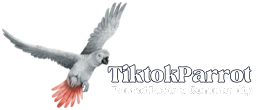Because many cockatoos seem receptive to touch, it is usually quite reinforcing for parrot owners to communicate with the birds using this approach. To some cockatoos this can result in sexual and courtship behaviors. This could easily create other problems for instance aggressive behavior towards others, territorial aggression and medical problems for instance prolapsed cloacas and chronic egg laying. By monitoring touching it fails to create this kinds of response and can assist prevent such issues.
Some species of cockatoos produce copious quantities of dust. This dust is the outcome of special feathers called powder down. These feathers are constantly breaking off into tiny bits that coat the bird with powder. This actually plays a role in “waterproofing” the bird. Try spraying a powdery a cockatoo with water and you may see droplets of water bead up and roll from the birds back.
For particular other parrot species, for one example the blue and gold macaws, absorption of this dust may cause respiratory problems. This dust can also cause problems for the human respiratory system and can cause a condition called bird fanciers lung.
Certainly any parrot species can have the ability to bite subject to its life experiences. Biting doesn’t need to become an aspect of owning a parrot as a pet. Whichever way it is worth noting the fact that larger cockatoos Moluccans and Umbrellas possess a beak shape which appears to allow a bite with plenty of pressure and a cutting action simultaneously.
Of most parrot species this bite appears to be considerably more damaging in comparison to others. Ideally a parrot shouldn’t be pushed to the extreme and want to bite. By taking advantage of positive reinforcement can allow parrot owners to experience a great relationship with their parrot subject to trust that don’t require the bird to bite.
There is a large size difference among different cockatoo species, there is virtually no single parrot cage size that’s most suited for this variety of bird. Generally, having a larger cage is desirable, You need to have a cage large enough to the parrot to allow the bird to exercise its wings without doing damage to it’s self on the cage.
Some species of cockatoos produce copious quantities of dust. This dust is the outcome of special feathers called powder down. These feathers are constantly breaking off into tiny bits that coat the bird with powder. This actually plays a role in “waterproofing” the bird. Try spraying a powdery a cockatoo with water and you may see droplets of water bead up and roll from the birds back.
For particular other parrot species, for one example the blue and gold macaws, absorption of this dust may cause respiratory problems. This dust can also cause problems for the human respiratory system and can cause a condition called bird fanciers lung.
Certainly any parrot species can have the ability to bite subject to its life experiences. Biting doesn’t need to become an aspect of owning a parrot as a pet. Whichever way it is worth noting the fact that larger cockatoos Moluccans and Umbrellas possess a beak shape which appears to allow a bite with plenty of pressure and a cutting action simultaneously.
Of most parrot species this bite appears to be considerably more damaging in comparison to others. Ideally a parrot shouldn’t be pushed to the extreme and want to bite. By taking advantage of positive reinforcement can allow parrot owners to experience a great relationship with their parrot subject to trust that don’t require the bird to bite.
There is a large size difference among different cockatoo species, there is virtually no single parrot cage size that’s most suited for this variety of bird. Generally, having a larger cage is desirable, You need to have a cage large enough to the parrot to allow the bird to exercise its wings without doing damage to it’s self on the cage.
If you find this thread/post informative, feel free to share it with your family or friends as it might be helpful to them.
Stay safe!
Cheers!
Stay safe!
Cheers!
